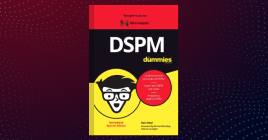Cybersecurity
and Shadow Data

 What is Shadow Data?
What is Shadow Data?
Shadow IT is the use of technology and cloud services without explicit approval or oversight from the IT and security departments, sometimes through cloud-based services provisioned by a line of business.
So what’s the big deal?
- With no involvement, the security team can’t fulfill its role of ensuring that all data in the organization, including Shadow Data, is secure.
- Shadow Data can cause a significant financial cost to the organization if breached, and therefore needs to be properly secured.
robust security measures for Shadow Data.
What are the Security Risks of Shadow Data?
When employees adopt services and applications not sanctioned by the security team, they are not always aware of the security implications to the company.
Data sprawl compounds the issue. Data from processes like CI/CD, data analytics, ML & AI, and abandoned backups add to the volume and complexity of Shadow Data that needs to be secured.
 Addressing Shadow Data Risk with Normalyze
Addressing Shadow Data Risk with Normalyze
Lack of visibility
Risk
- The security team doesn’t know about Shadow Data or its sensitivity.
- IT teams can’t manage the lifecycle of data and removal of sensitive data when it is no longer needed.
- Response times to potential threats can be slower as a result of limited visibility and can lead to more reactive security vs. proactive.
Solution
- Discover and classify data across your entire hybrid infrastructure, including Shadow Data. Identify all locations where your data resides, even when others in the business might have forgotten about these stores/applications.
Misconfiguration of data stores
Risk
- Not all configurations may meet company standards.
- Temporary, test, or ‘sandbox’ data stores may contain sensitive data with exposure risk.
Solution
- Identify and prioritize data that is not properly secured.
Weak access governance controls
Risk
-
Shadow IT may have over-provisioned users and roles that are susceptible to phishing and insider threats.
Solution
- Identify over-provisioned users and roles and enforce the principle of least privilege.
Risk
-
Vulnerable resources may have access to sensitive data, even if the data itself is properly secured.
-
Security teams are also unable to protect data they don’t know exists, yet the business might still be liable for misuse.
Solution
- Context-based risk assessment identifies all potential attack paths to your data for quick resolution of direct and indirect threats. Continuous monitoring ensures you are aware of any changes leading to increased exposure.
Risk
-
Requirements are complex and vary by region and industry, and violations can lead to significant fines.
-
Security teams can’t ensure that unauthorized applications remain compliant.
Solution
- Continuously monitor regulatory compliance across multiple regulations and quickly identify which controls are being missed.
Ransomware attacks
Risk
-
Attackers can threaten reputational damage or sensitive data exposure.
Solution
- Get cyber recovery and ransomware protection capabilities with the Normalyze-Cohesity integration.
 Shadow IT: Mitigating Security Risks
Shadow IT: Mitigating Security Risks
Establish a Shadow IT Security Policy
- Develop a comprehensive policy that addresses the acceptable use of cloud services, clarifies the security team’s role in approving and managing technology, and promotes employee awareness about potential risks.
Enhance Data Visibility
- Get comprehensive visibility into all the data, including Shadow Data generated by services being used within your organization, and classify its sensitivity.
Strengthen Access Controls
- Perform data access governance and implement robust identity and access management (IAM) practices to ensure that only authorized personnel can access sensitive data and cloud resources.
- Enforce multi-factor authentication, role-based access controls, and regular access reviews, as well as the principle of least privilege.
Manage Risk
- Identify misconfigurations and attack paths to data from resources that can access it.
- Proactively monitor for compliance with regulatory requirements.
Address Issues
- Mitigate identified risks for all your data, including Shadow Data, and automate where possible.
Educate Employees
- Conduct regular training sessions to educate employees about the risks associated with Shadow Data and the importance of adhering to approved technology guidelines.
- Encourage employees to report any unauthorized cloud services or security concerns promptly.
Normalyze DSPM: A Shadow IT Security Tool
Normalyze data security posture management is an effective part of a proactive risk mitigation strategy for Shadow Data.
To learn more, contact a Normalyze expert today or sign up to discuss your use case live with a security engineer.
